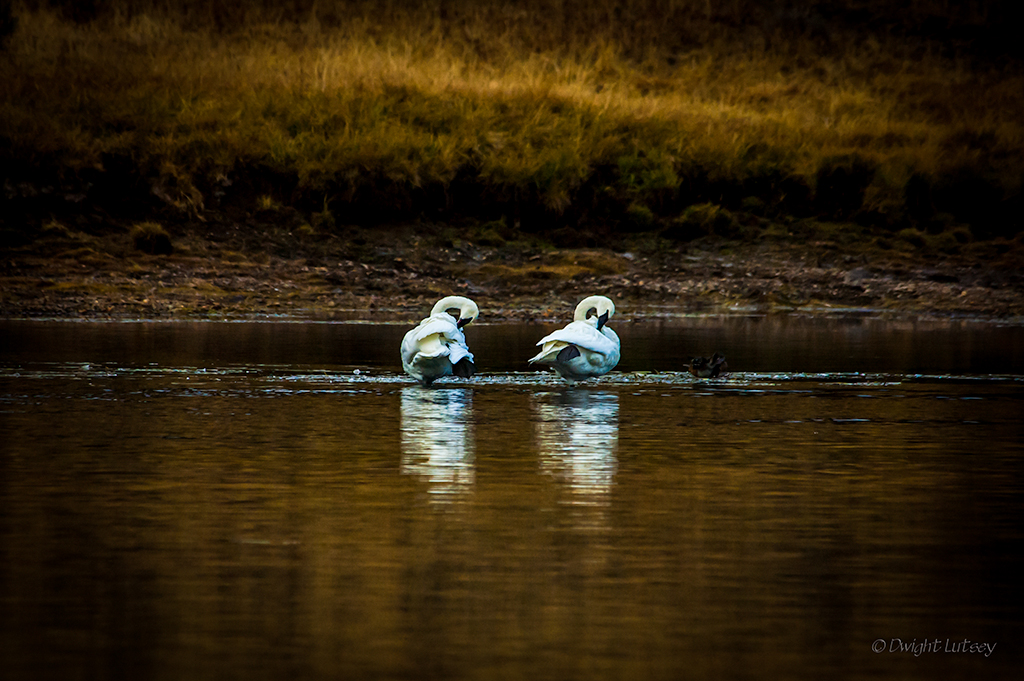 Trumpeter Swans Yellowstone click to enlarge
Trumpeter Swans Yellowstone click to enlarge
One of the most amazing sights in Yellowstone are the Trumpeter swans. They grace the river ways of Yellowstone National park with the charm and allure of well-trained ballerinas. Their mannerisms and postures seem so natural that one wonders how that came about. Are they born that way? Is it just natural? The Institute had to find out. Our readership demands it, so we embarked on a multi-year study of Swans, their genesis, their behavior, their rigorous yet secret training. We bring you behind the scenes to see how Swans are made.
One of the most compelling questions we had was, how come you see adult swans and brand new goslings but you rarely see them in their in-between, or awkward phase. Where are they? Where do they go? Determined to find out we spent countless hours observing, trailing, chasing clues until we discovered the answer.
As soon as young swans get pass the cute gosling stage and enter into that awkward adolescent period they are immediately shipped out to a training facility hidden deep in the backcountry of Montana and maintained by the training nuns of Our Sisters of the Immaculate Plumage. There they spend countless hours under the severe gaze of these sisters of the fallen feather, being taught swan manners and the fine movements that we as observers have come to expect of adult swans. Under the severe and unrelenting tutelage of these stern taskmasters they transform from awkward ugly teenagers into the graceful adults we’ve come to expect and love. Many a young beak gets smacked with those wooden rulers until each and every move is second nature and perfect. Grace and beauty comes at a price in the swan world.
What you see in the image above, which was taken with a long lens as we couldn’t chance being discovered and getting our beaks smacked with a wooden ruler, are two, soon to graduate, students, practicing a synchronous movement in the ballet works known as “l’étiquette du matin au lever” or as we know it in English, “Morning Etiquette Upon Rising” and aptly titled “Preening”. Notice how exact their movements are, how precise, how synchronous, they can do this for hours with never a mistake and without even looking at each other. Their harsh training has paid off and as soon as the scars on their beaks* have healed, they will rejoin the adults and put on their incredible flawless performances for the benefit of the thousands of fortunate visitors that attend the park.
Our study now in its 12th year has uncovered many other facts regarding the harsh training of young swans which we don’t have time or space to relate at the moment. That plus the cease and desist letter stating pending litigation from the Sisters of the Immaculate Plumage due to Invasion of Privacy, trespassing, making true statements about their teaching staff, failure to yield right of way, destruction of property, namely the breakage of several wooden rulers, and other issues have temporarily halted our study. We believe that this is just a minor setback and our legal team has told us “Don’t Worry, Be Happy” so we hope to be back trespassing in the very near future continuing the work you have come to expect from the Institute. Stay tuned.
*Many of you have asked “What is that big lump you sometimes see on swan’s beaks, that one right where their bill joins their heads?” Well now you know, ruler marks.

You must be logged in to post a comment.